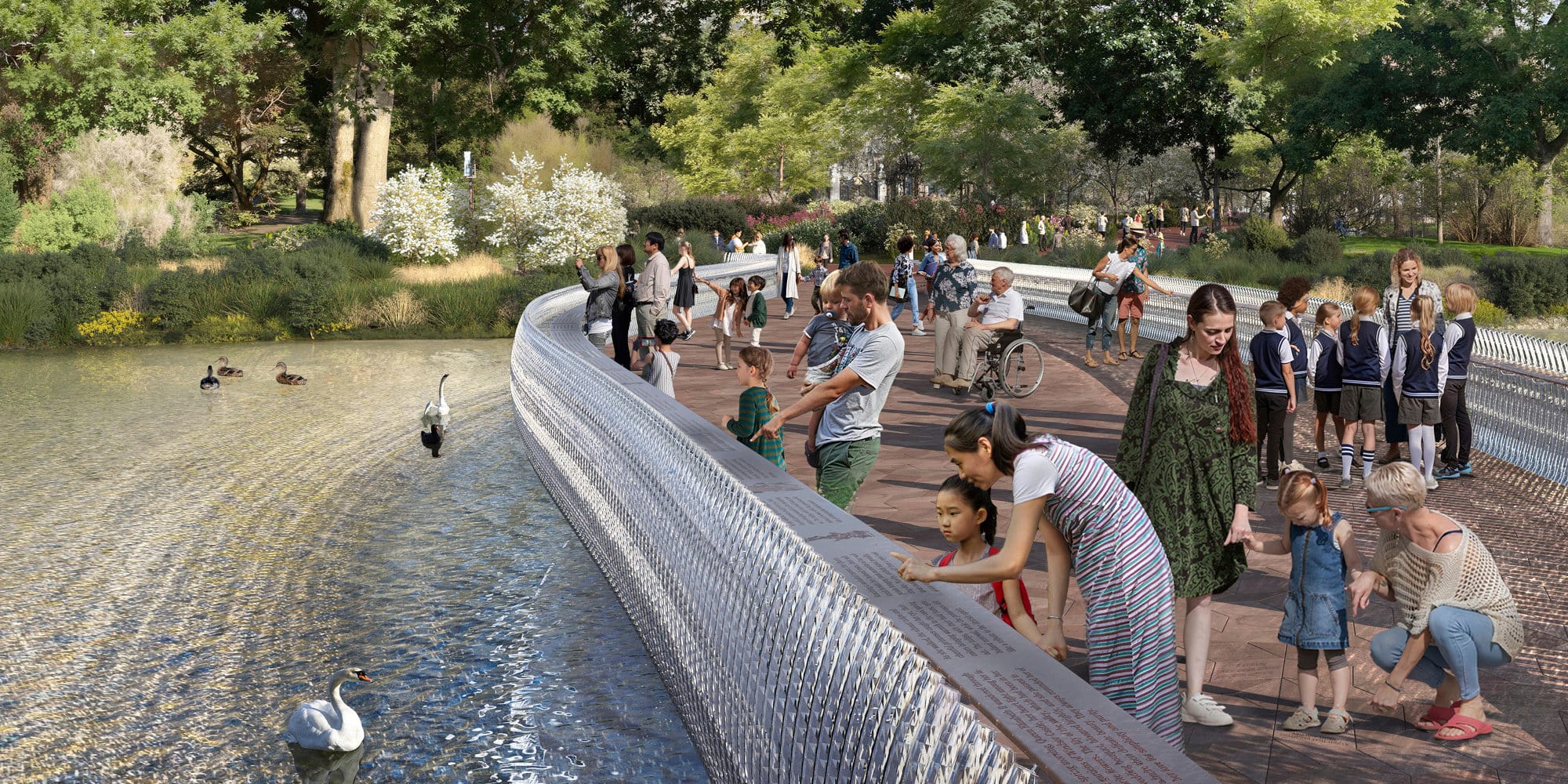The firm that designed Apple’s Spaceship campus and every fancy Apple Store has been picked to build Queen Elizabeth’s memorial
In her last public appearance before she died (just two days before, even), Queen Elizabeth II formally appointed Liz Trust as the UK’s new Prime Minister. So, the starting point of Britain’s shortest-serving PM (at 50 days) more or less coincided with the end point of the reign of Britain’s longest-serving monarch (50 days, plus 70.45 years).
True, she barely served the UK longer than my wireless doorbell camera goes before it needs a recharge. But facts are facts: she was a for-real Prime Minister. But nobody seems to be all that fussed about how London should memorialize Liz Truss’ service to the nation. If she left a coffee ring on a piece of furniture at 10 Downing, I suppose they could have just engraved “TRUSS, BARELY” on a little self-stick faux-metal tag and stuck it in the center, and called it Done.
The permanent memorial to the other dame, however, isn’t the sort of project that can be handled with a $6 purchase on Etsy.
I have a morbid curiosity about how London will honor and memorialize Queen Elizabeth II. I’ve been fascinated by that topic since long before BBC newscasters started storing changes of black clothing under their newsdesks.
Her reign was culturally-iconic, historically-significant, and legitimately (even if some would call say “begrudgingly”) inspirational. What could London possibly erect that would be equal to her significance? They couldn’t just commission a figural sculpture and add it the existing population of bronze people that already dot London (and every other city in the world). Whatever it was, it was going to have to be epic.
…And disruptive and transformative to the existing nature and purpose of that acreage. Would they knock down buildings, displace people and businesses? Might they even do something that altered the skyline of the city itself?
I was also interested in this topic because of the possibility that the committee that makes the decision might do something hysterically funny, by hijacking their crystal-clear mandate.
SCENE: A very fancy boardroom. The head of the Committee closes and locks the doors and calls the meeting to order.
“We have the financial and political power to install public art of our choosing almost anywhere we want to place it,” they begin. “Everyone’s expecting a respectful, literal, figural bronze of the Queen…Y-A-W-N. But we owe it to the city, as well as to the unsophisticated numbskulls we share it with, to seize this once-a-century opportunity to move public art forward.”
(They open a PowerPoint deck)
“I know you’re familiar with this artist. We’ve had our eye on him for a long, long time. His name is (shakes a small cardboard box, producing a metallic rattling noise and what might be the sound of an egg getting smashed and crushed). He told me that he’s been working on a new piece of monumental sculpture for the past two years, and, my fellow aesthetes, it’s so inscrutable that his housekeeper has already swept up and thrown away four different iterations of his maquette…”
These things do tend to happen. Something resembling a big wad of gum is unveiled in a town square. “But what does this have to do with the 350th anniversary of the founding of our historic New England seaside village?” those gathered wonder, amid their polite applause. The truthful answer is “Nothing; I’ve been trying to sell these design sketches to one arts committee or another since the Clinton administration.” But the artist is a seasoned pro and comes up with…how about “Liberty is a shifting, amorphous construct, and yet its presence is undeniable no matter the era”?
I’m only slightly disappointed to learn this week that the newly-approved design for London’s Queen Elizabeth II National Memorial is quite sensible and appropriate. And beautiful, going by the renderings. They’re going to re-do a section of St. James Park, with new gardens and paths, two figural and equestrian statues of the Queen (yet to be finalized, but promised to be something traditional), plus a glass bridge across the pond that echoes her wedding tiara, which will replace an existing bridge.

Overall, it seems like a fine place for people to be…whether or not they intend to reflect upon and seek inspiration from key points in Queen Elizabeth II’s life, such as her outstanding performance in The Naked Gun.
Of particular interest to us: this proposal was the work of Apple’s pet architecture/design firm, Foster + Partners. It seems like Apple turns to this group every time the company sets out to make an architectural statement. Search for “Apple” on the firm’s catalogue of completed projects and you’ll see a collection of every Apple store and property that deserves to be turned into an officially-approved LEGO set.
Many of these Apple places make ample use of huge planes of shaped glass. The Spaceship is basically a big glass O-ring. No wonder this same firm was able to convince the committee that engineering and installing a bridge made out of glass is going to be right within their wheelhouse.
The firm even speaks like Apple. The firm’s founder and namesake said
We have sought to reflect these qualities of the formal and informal in our design, with an appeal across a wide range of ages and interests. To these ends, we have discreetly stretched the boundaries of art and technology with a deliberately gentle intervention.
Don’t you think this guy would have been right at home speaking on video in front of a white backdrop during an Apple product introduction keynote? I can practically hear him speaking of chamfer angles and how the message of an Intent is only revealed once Engineering has been provoked. ⓘ
